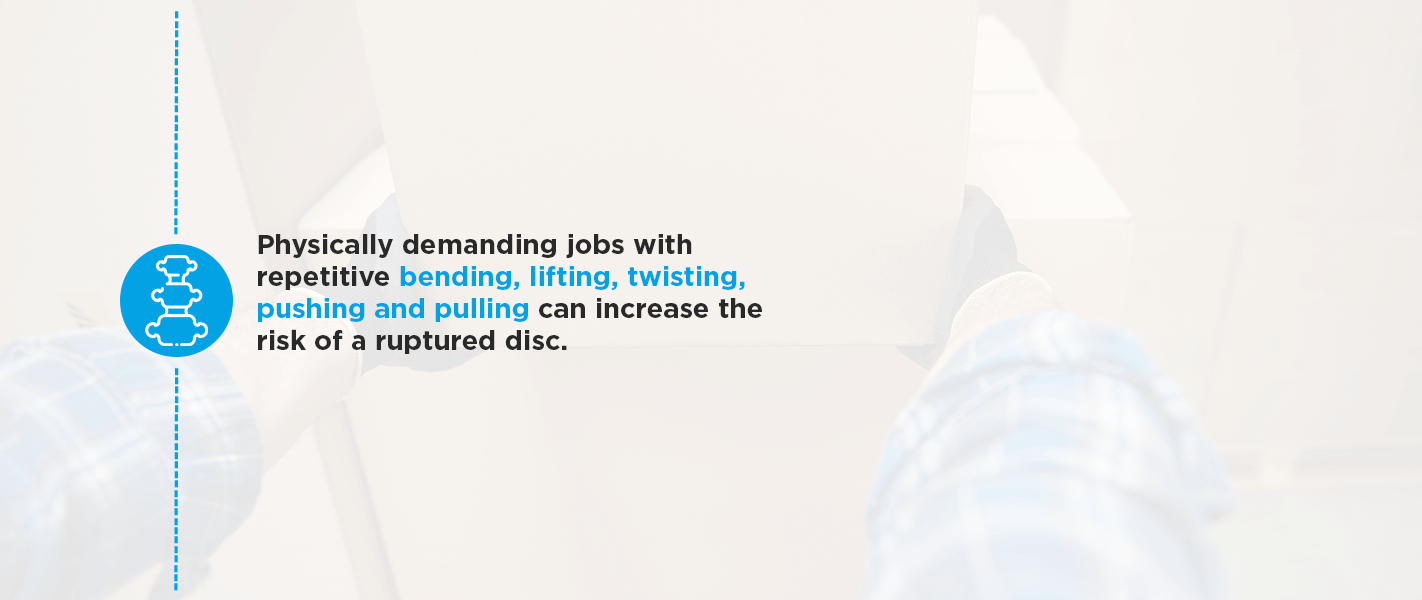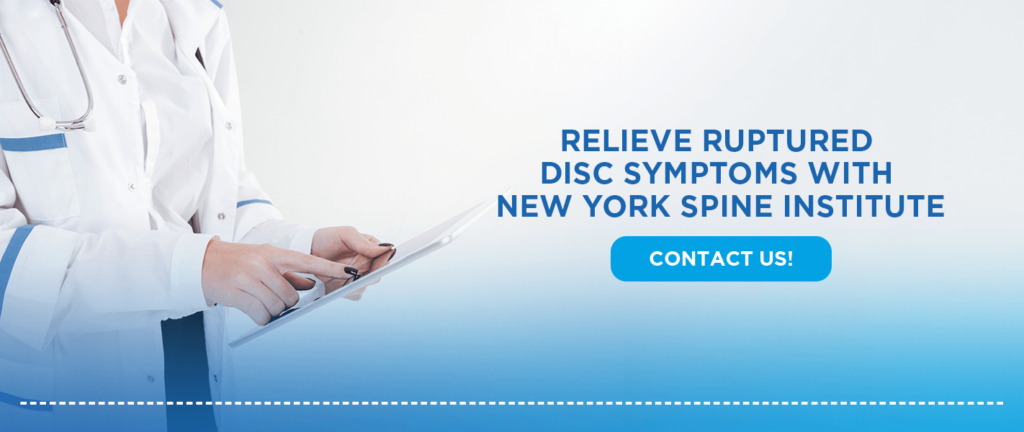

Spinal discs are rubbery, shock-absorbing cushions between your spinal bones, or vertebrae. They prevent the vertebrae from grinding against each other and support stress incurred by the body during movement. When the spinal column weakens or tears, these discs can protrude outward and pinch nearby nerves.
This phenomenon is known as a ruptured disc. It’s a common condition affecting over 3 million people in the U.S. annually. Read on to learn more about ruptured discs, including causes, symptoms, diagnostic methods and treatment options.
A ruptured disc — also called a herniated or slipped disc — occurs when a portion of your spinal disc bulges or ruptures, slipping out of place. This irritates the surrounding nerves, causing pain, discomfort, numbness and weakness throughout the body.
In most cases, disc herniation doesn’t warrant serious concern. Symptoms typically subside after a few weeks of self-care. However, surgery may be in order if your pain worsens, becomes chronic and persists for months.
Spinal discs can weaken and rupture for various reasons, from daily work and activities to a sudden, traumatic injury. Certain biological factors and lifestyle choices may also play a role in this condition. Some common causes of herniated discs include:

Some common symptoms of disc herniation include:
Doctors can often diagnose herniated discs based on symptoms — especially sciatica, as pinched nerves around the discs typically affect the lower extremities. They’ll perform a comprehensive exam, asking detailed questions about your symptoms, injury or medical history for an accurate diagnosis. In some cases, your doctor may also order medical imaging, such as:
After diagnosing a herniated disc, your doctor will determine an appropriate treatment plan based on pain levels, symptoms and severity. Minor disc rupture may only need home-care techniques like rest, ice, heat or anti-inflammatory drugs. More complex cases might require stronger medications or physical therapy. Incredibly painful or severe herniated discs may warrant surgery.
Below are various surgical and non-surgical treatment options for ruptured discs.
For mild or moderate pain, your doctor may suggest nonprescription pain medication such as acetaminophen, ibuprofen, naproxen sodium or aspirin. If over-the-counter pain relievers and other home remedies aren’t successful, they may prescribe muscle relaxers.
Your doctor may recommend physical therapy sessions to relieve your discomfort. A physical therapist can show you different exercises, stretches and positions to minimize herniated disc pain.
Applying an ice pack to the affected area can help numb the nerves and alleviate pain. Additionally, a heating pad or hot bath can help loosen tight muscles, allowing you to move more comfortably.
If oral medications don’t relieve your pain, your doctor may recommend a corticosteroid injection around the spinal nerves to reduce inflammation. However, cortisone injections don’t provide long-term relief — their effects typically wear off after a few months. There are also limits to how many injections you can safely receive in a given year.
If your sciatica and pain continue for over three months, it’s considered chronic and may require surgery. Ongoing numbness or weakness, loss of bladder or bowel control, and difficulty standing or walking can also indicate a need for surgical intervention. Different procedures for ruptured discs include:
Full recovery from herniated disc surgery may take up to several weeks. In the meantime, try to refrain from strenuous activities like twisting, bending down and lifting heavy objects. Be sure to follow your doctor’s instructions during recovery and let them know if you experience any complications.

If you suspect you have a ruptured disc, our team at New York Spine Institute can assist you. As one of the tri-state area’s leading spine and orthopedic centers, we perform a variety of world-class services including physical therapy, minimally invasive and complex neurosurgery, diagnostic medical imaging and more.
We can deliver the treatment you need based on your unique circumstances, symptoms and pain. Contact our center to set up an appointment and begin treatment.